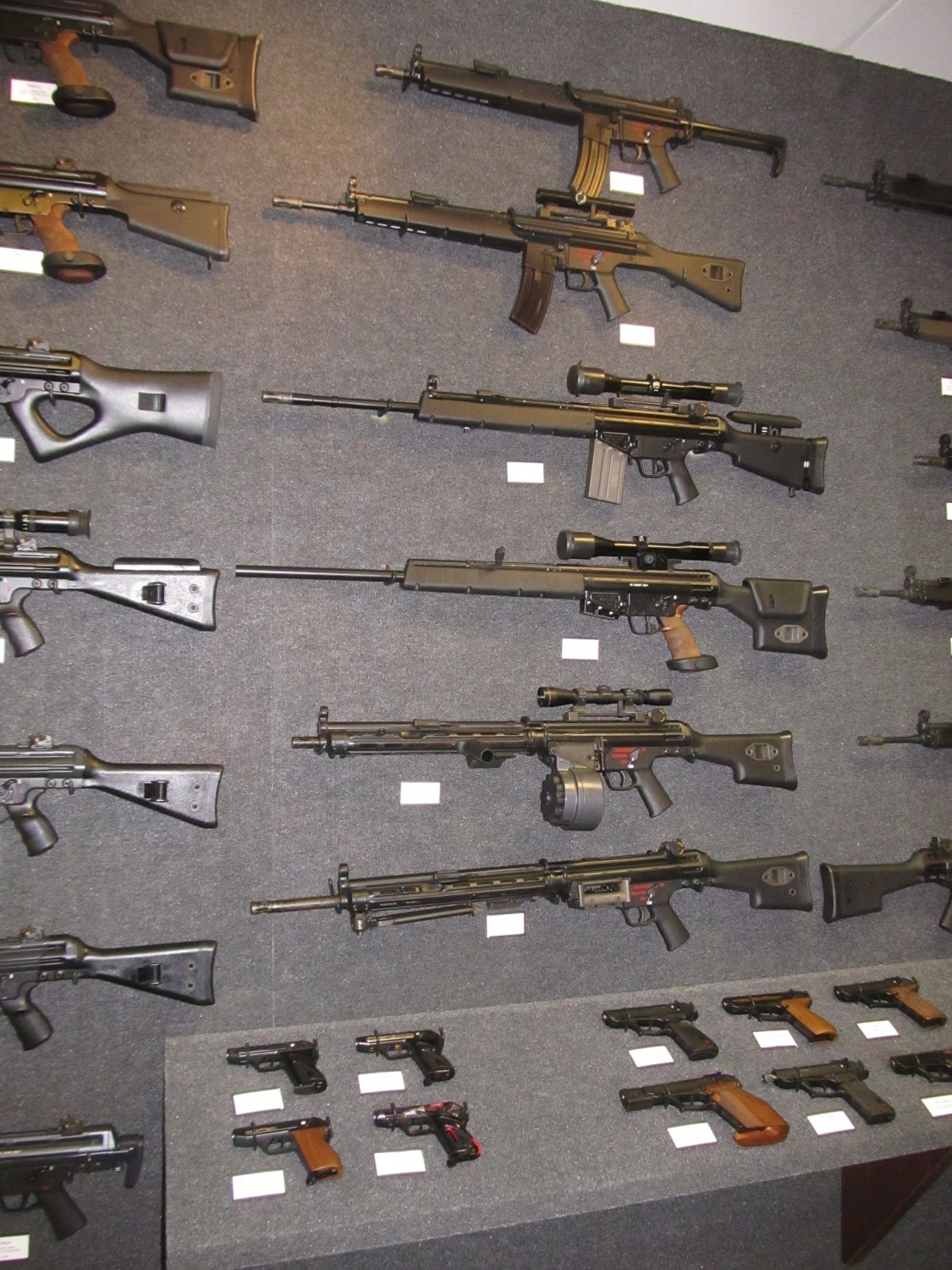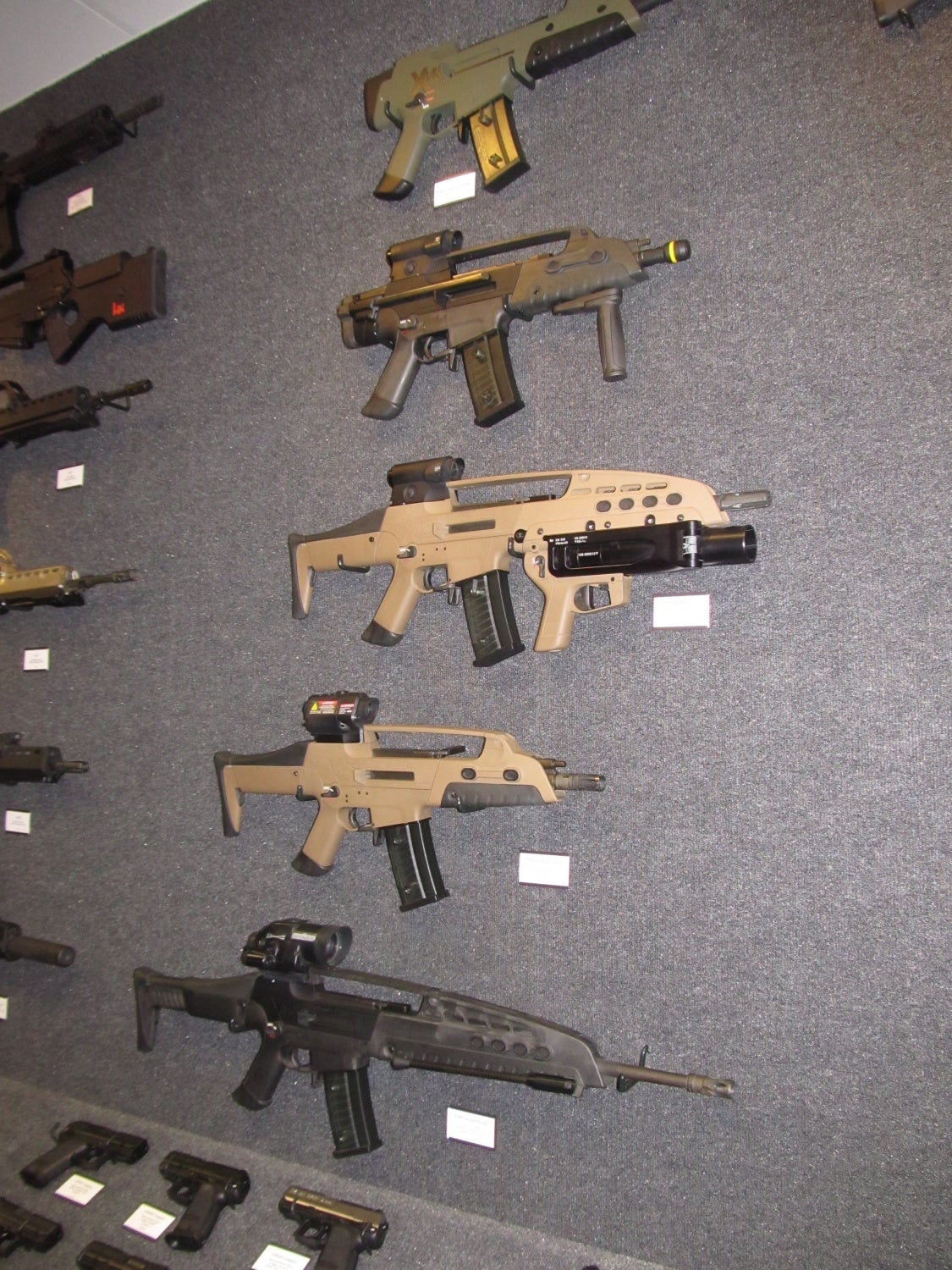Back in the 1990s, Heckler & Koch USA decided to put together a working reference collection of the company’s products. This collection was put together at their Sterling facility in Virginia (Here are some pictures from the previous facility), but has since been moved to their new facility in Ashburn, VA as of 2007. The name “Gray” (or as H&K had British management, they write it “Grey”) comes from the color of the walls in the room which in both locations were gray. Although the room is mostly used as a working reference and display collection, there is also a full set of tables, chairs, and a TV inside it as it is also used as a conference room (it should be noted that there is a dedicated conference room at the Ashburn facility as well). There is another Gray Room back in Germany (the original H&K pattern room, here’s a link to some good pictures of that) but it is much less publicized and known about. I took all these pictures in 2012. There’s a thread on HKPRO that has some decent pictures of the room but from different angles that I took. Please note that I’m not an H&K expert in the least so I’m doing the best I know of with the captions, so feel free to correct me or add your own commentary about the small arms displayed.
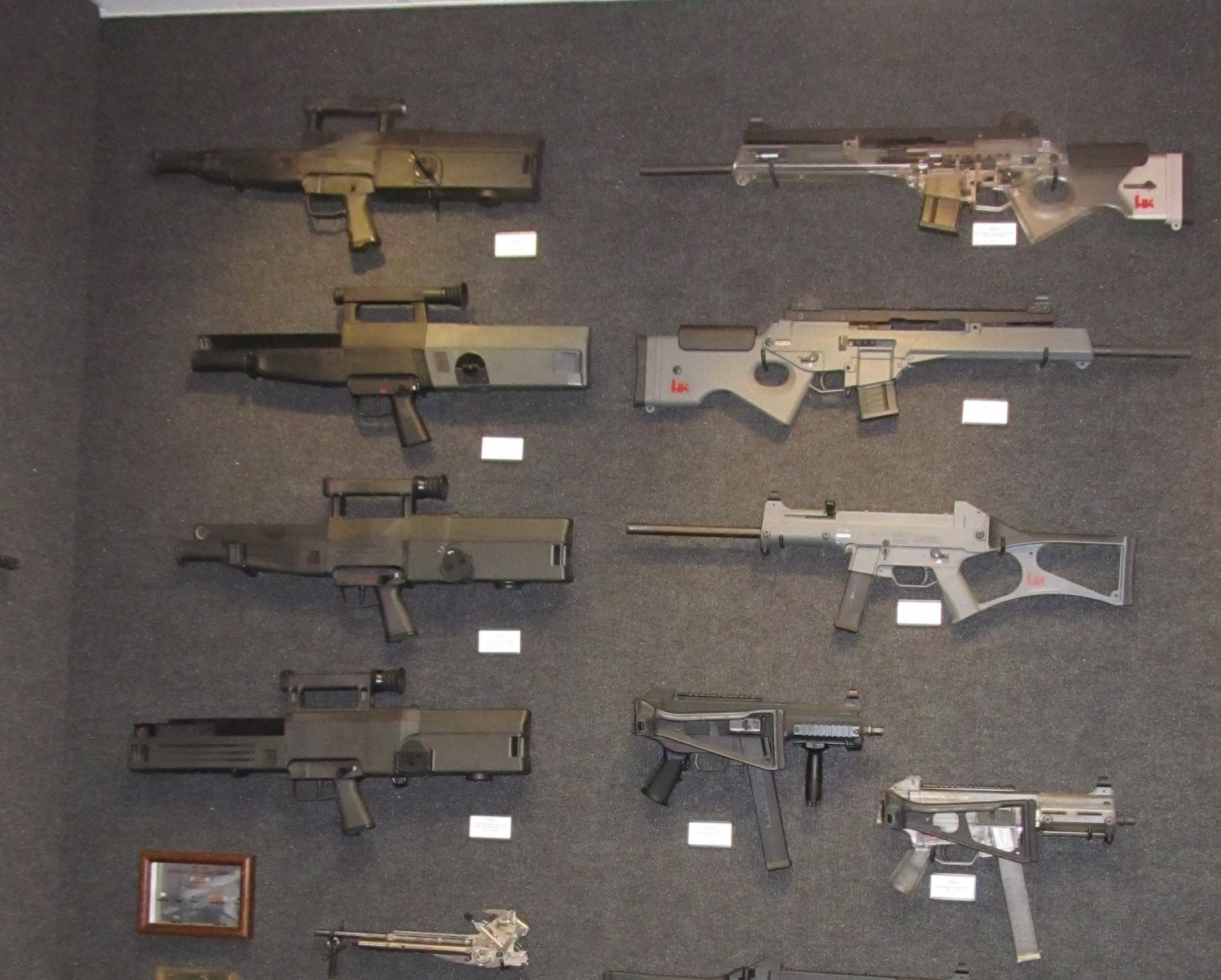
Some of the G11, SL8 and UMP prototypes. Notice the cutaway version of the SL8 and the various designs of the G11 from a shorter length to a rifle sized version. Technology so ahead of its time that even today we don’t know where caseless ammunition will proceed. It was also optically equipped, something that Western militaries consider as a standard in the 21st century but the G11 was almost thirty years ago when it was being tested.

Left half of the room, nothing but MP5 and G3/HK33 models. The handguns are laid out on a table that circles the walls and the rifles are placed on nails that hold them in place but can be taken off to handle. It is also a working conference room with a center table and TV on the wall. Notice also the various models of the VP70 on the lower left.

This is just half of the USP pistols on display, the other half includes some of the more modern variants such as the P30 and P2000s. Firearms aren’t just randomly put into the Gray Room, they are usually picked because they show a rare model or progression of the line. For example here, these USPs showcase different years of production, different models such as the see through version and the orange training version.
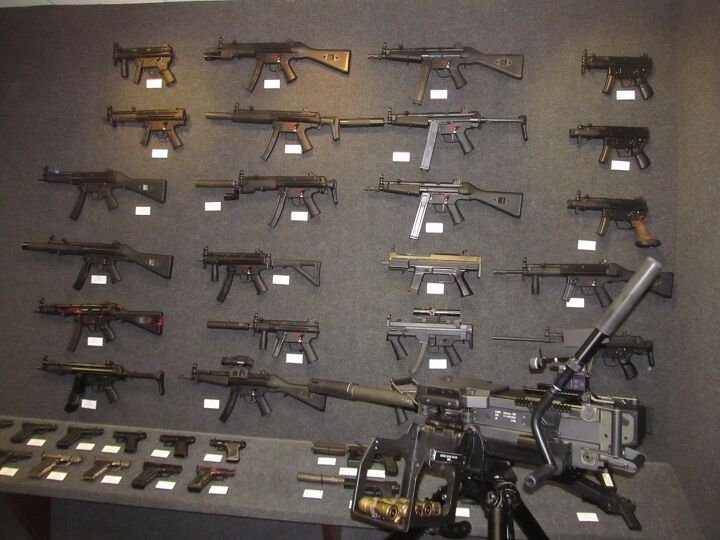
Various selections of the MP5 series and its civilian legal versions as well. The MP5 third from left on the far left column is probably the oldest version on this wall. The three odd submachine guns in the bottom column, third from left are SMG Is and IIs, a prototype advancement of the MP5 that never took off. You can read more about them here.
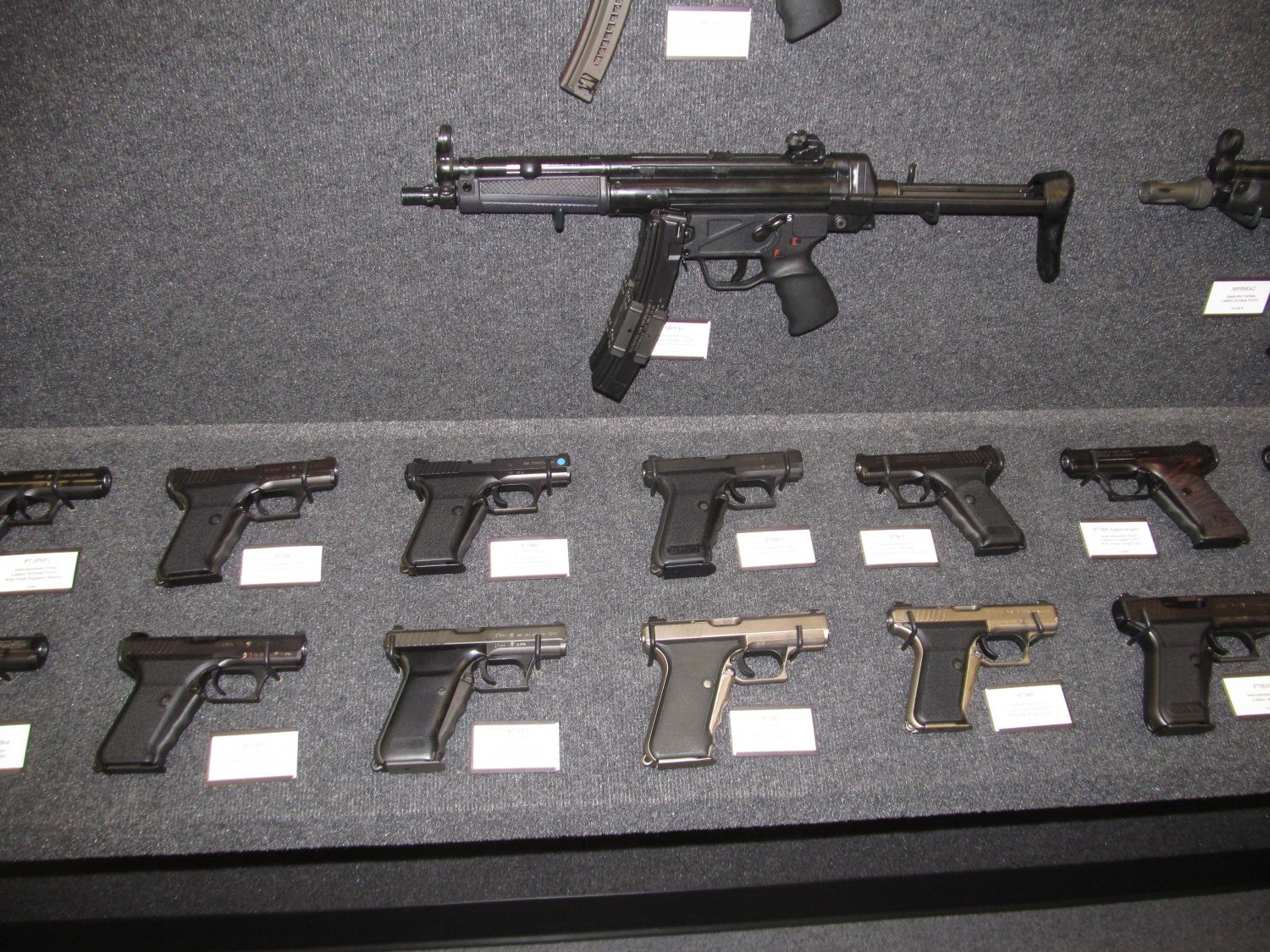
That’s alot of P7 Squeeze cockers! An interesting note about the P7 is that once fired, if the shooter keeps the trigger held down, and releases the squeeze cocker lever and depresses it again, the gun will go off.
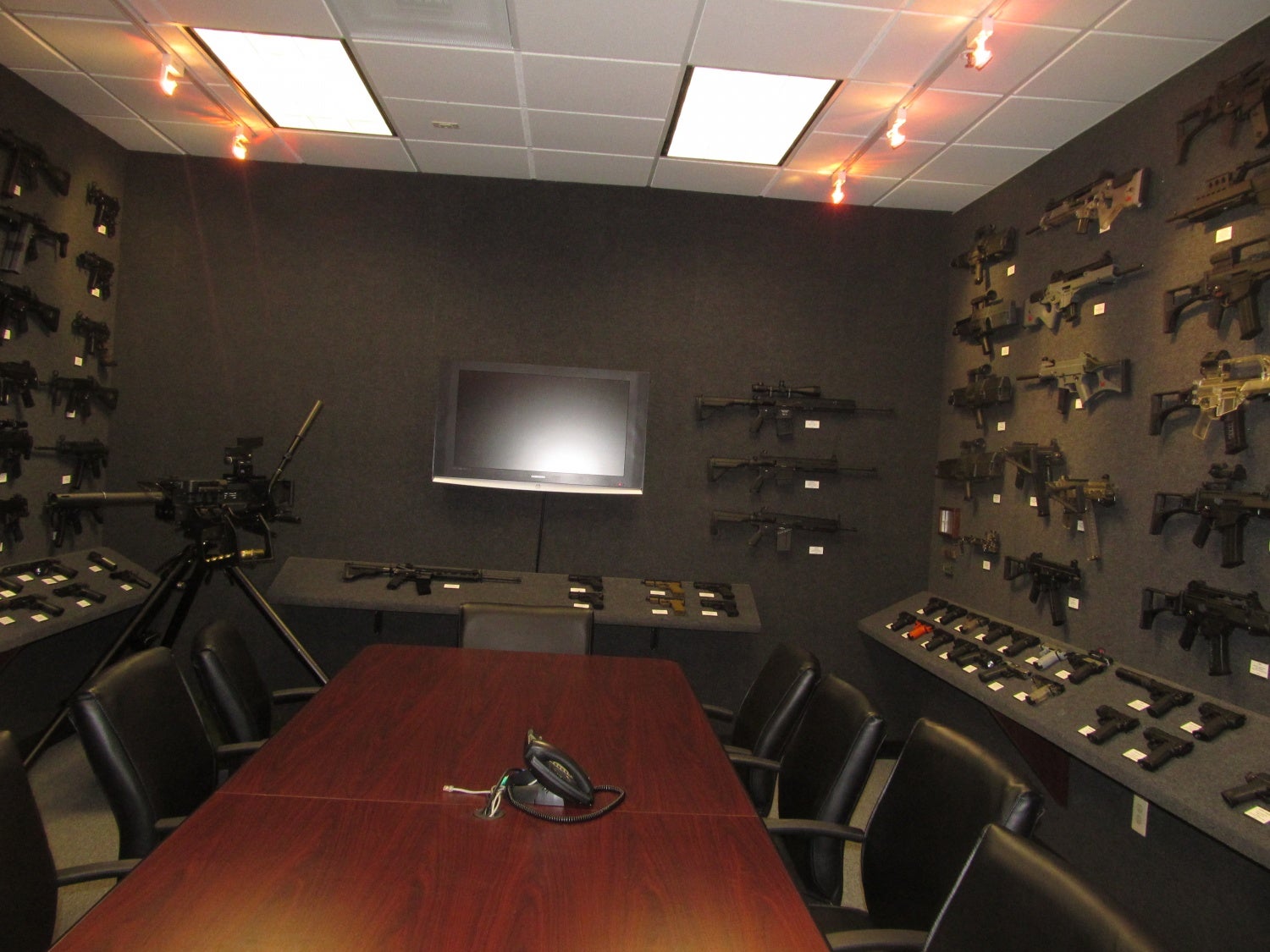
The Gray Room from the entrance point, the small arms on the forward wall are all quite new, mostly featuring the 416 and 417 series of rifles, and the P2000 pistols.
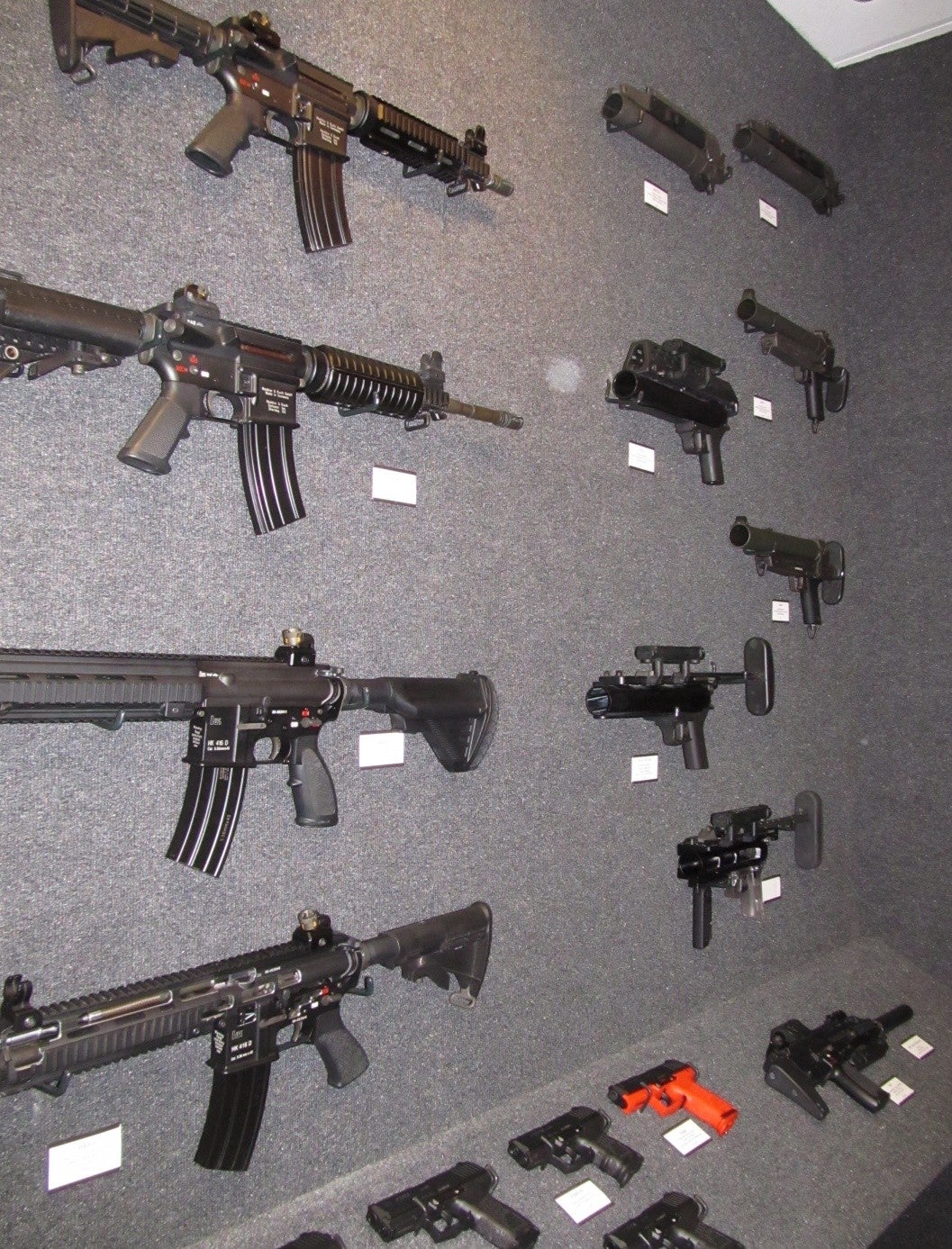
A progression of piston operated H&K AR based rifles from initial proof of concept designs to the M27 currently being issued to the Marines. There is also a progression of handheld and under barrel mounted 40MM grenade launchers on the right hand side. Notice the suppressed Mp7 with reflex sight.
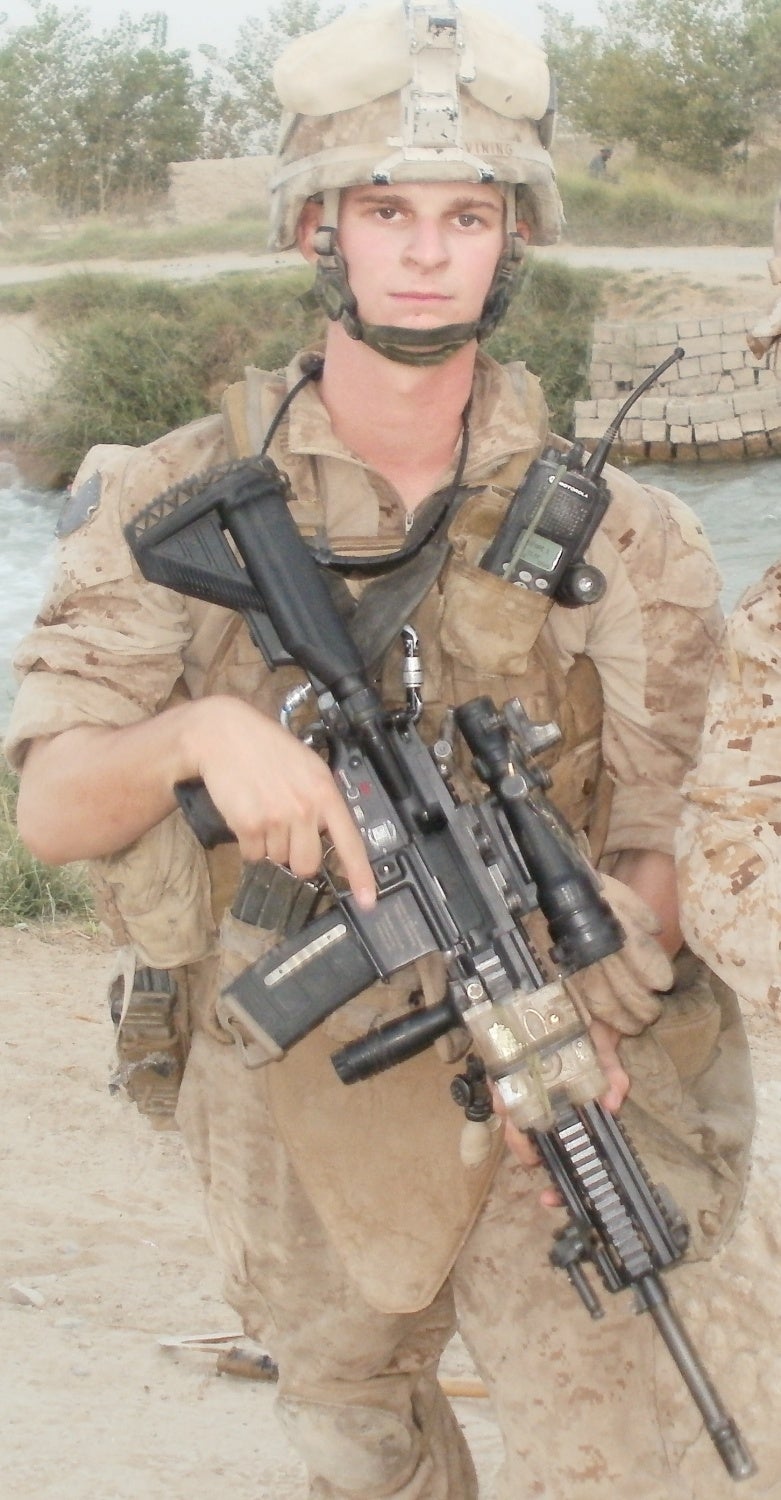
And the author a year earlier in 2011 with his issued H&K M27 IAR while on deployment in Nawa district, Helmand province, Afghanistan. Don’t let anyone ever tell you Pmags can’t fit reliably in the M27, because it can be done. Bipod adaptor is a Versa Pod.
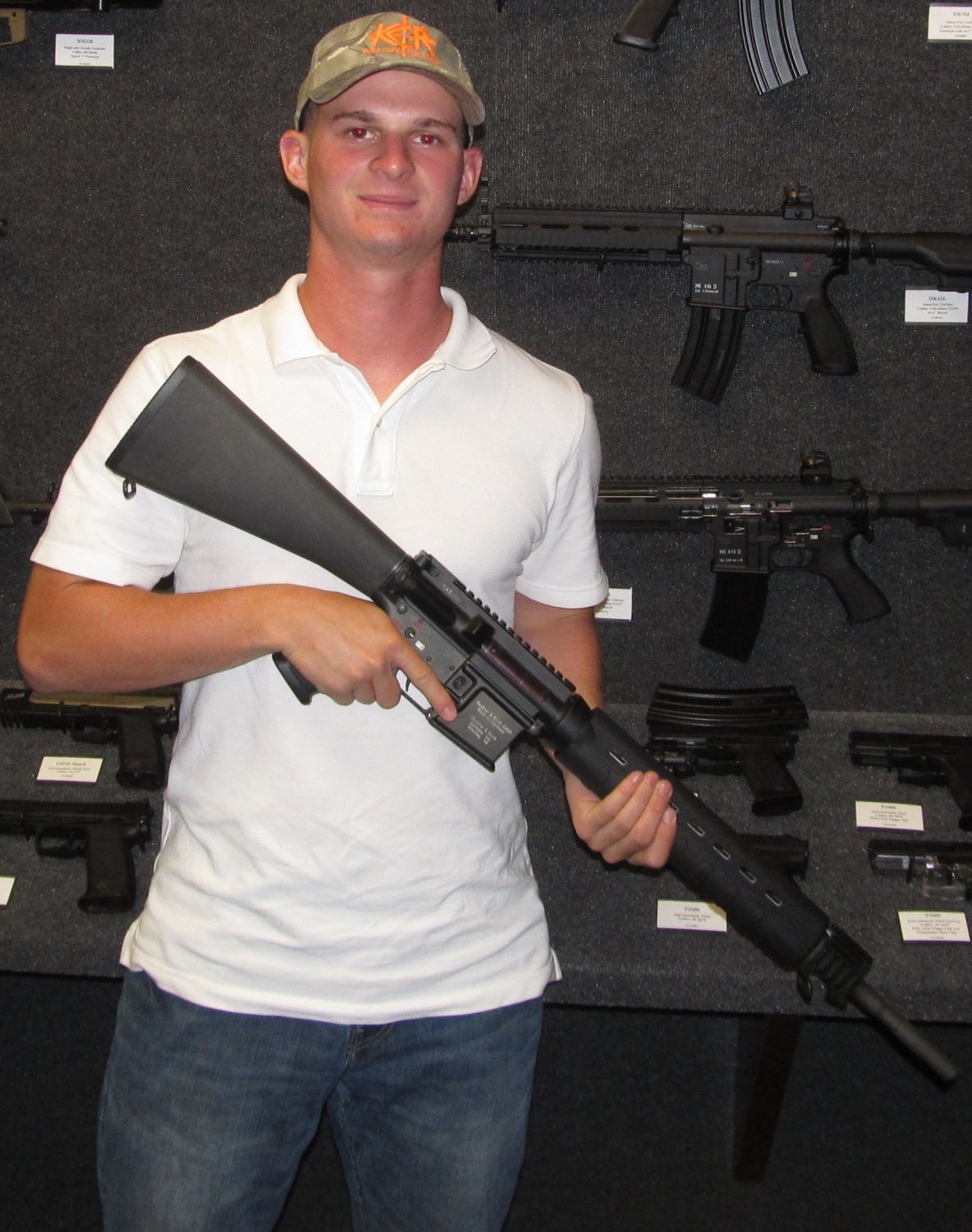
The author holding one of the first prototypes of H&K’s try at an AR system while in the Gray Room. As seen in the previous pictures, the Gray Room does an excellent job of showing the progression from the full length rifle, to the early carbine prototypes, then onto the M27 contract and the commercial MR223 and HK416.
In the Media
Heckler & Koch Facebook page– The company has an entire photo album on Facebook dedicated to various firearms in the Gray Room. Unfortunately, it says “every” firearm in the Gray Room but there are only pictures and descriptions of 40 small arms whereas the room has much more.
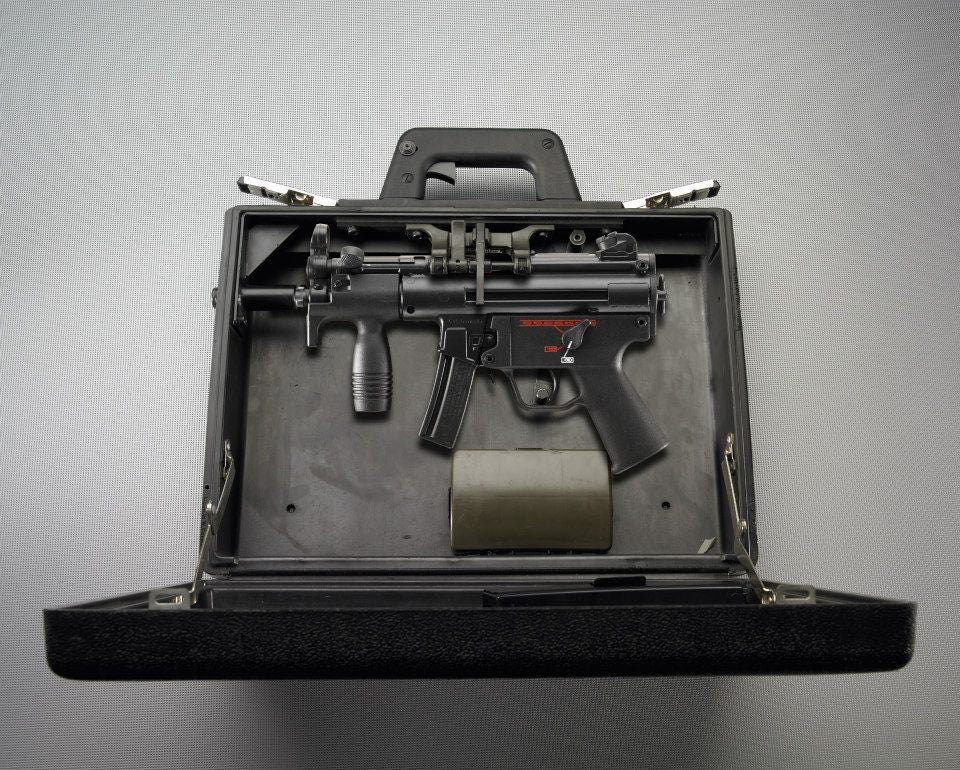
Taken from the H&K Facebook page, the MP5K briefcase actually isn’t in the Gray Room at the current moment.
The Grey Room App- The author of the book, Jim Philips, also created this app that you can buy on the Apple App store for $4.99. A fuller description of it is through the company that makes the app here. It seems to be just a slide show with captions of most of the firearms in the Gray Room, but it certainly has more pictures and descriptions than the Facebook album.
The Gray Room Book- You can buy it on Amazon but at almost seventy dollars. The book is written by Jim Philips and is simply a coffee table photo essay of almost everything in the Gray Room. It has nice glossy pictures on one page with a description of the firearm on the proceeding page. If you want an actual company history of Heckler and Koch, the official book is reviewed online here.
HKPRO- The HKPRO website has a good page on the old Gray Room and I assume they intend to create one about the new location, but it looks like the page hasn’t been updated since 2007, so maybe it’s just a matter of getting around to actually arranging a visit with H&K.
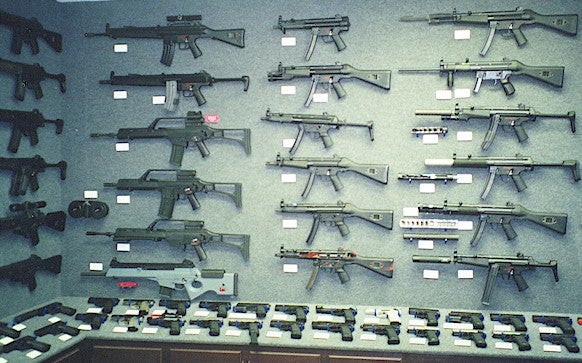
One of the photos from HKPROs website showing the old room. Between the room in Virginia and the room in Oberndorf, there is also alot of trading and loaning that goes on so the rooms will have different items at different time periods.
A note on working reference collections
Within Europe and the United States, there are about a dozen semi public working reference collections have to do specifically with military small arms. H&K has their two Gray Rooms, there’s the Ministry of Defense Pattern Room in the UK, Knight’s Armament has one in Florida, Long Mountain Outfitters has one in Nevada, Springfield Armory (the national park, not the current day firearms company) has one in Massachusetts. Of course there is also the J.M. Davis firearms museum and collection with over 20,000 firearms but this is more of a private collection than a sustained effort to collect specimens of small arms development. If any reader gets a chance to go inside any of these collections, I would extremely encourage it, being inside these collections are akin to being in gun utopia’s, except you can’t take any of the small arms home. A working reference collection is nothing like a museum, where you simply stare at the small arms through glass and read about them. The very definition of “working” means that you can go inside, pick up the guns, take them apart, and fully examine them down to their smallest parts and accessories. Some collections even have opportunities where you can take them out and actually fire them, as is shown by Jerry Miculek and Reed Knight in some of their videos produced on Youtube.
The downside however, is actually getting into them (such as this guy). Because of the vast efforts and financial resources required to maintain these collections, most of them are not public domain at all. As an example, the only reason I got to see the Gray Room in Virginia is because of a very generous invitation (however, some guys on HKPRO were able to arrange a tour done by H&K of the Gray Room and a number of other small arms they had on site). When I went to the MOD Pattern Room it was under very similar circumstances. So having these collections is sort of a double edged sword, it’s amazing that they exist at all, but truly cumbersome that there are so many difficulties in accessing them.
 Your Privacy Choices
Your Privacy Choices

